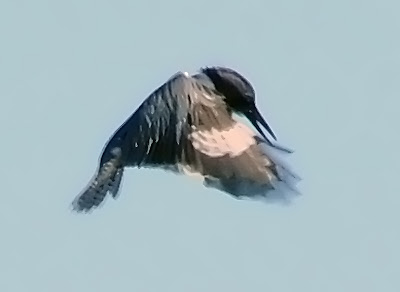I had been house-bound for a week with a bad bronchitis, just having enough energy to fill the feeders for the new backyard arrivals, the White-throated Sparrows and Purple Finches, and the still present Juncos and year around Goldfinches. But mid week I finally felt well enough for a trip to the trail along the CT River in Hinsdale, NH. It was a blustery day with white caps on the river and fallen leaves swirling through the air. This had not however kept the spring migrants from moving in. A mixed flock of Yellow-rumped Warblers (Myrtle subspecies) and Palm Warblers (Yellow Eastern subspecies) was foraging in the gravel potholes on the path. Most birds were keeping low to the ground, rising only at the approach of my car.
Along the path Ruby-crowned Kinglets were singing and flitting through the dense brush.
Today, Easter morning, the sun was out as were my fellow birders with their binoculars and cameras. Yellow-rumped Warblers, and Palm Warblers, swooping Tree Sparrows and Barn Sparrows put on a joyful show. After a long winter it was a day to celebrate the renewal of life.
Good Birding!


























